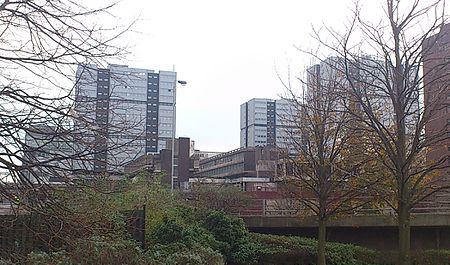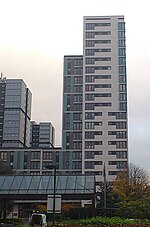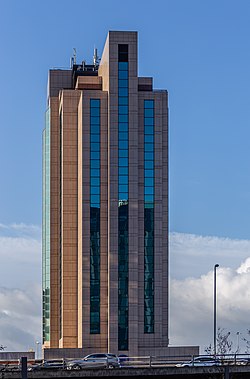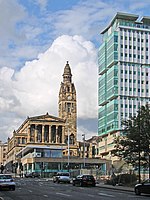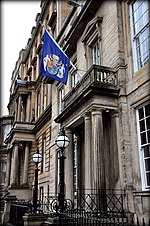Blythswood Hill, crowned by Blythswood Square, is the wealthiest part of central Glasgow, Scotland. It extends from the west edge of Buchanan Street to Gordon Street and Bothwell Street, Charing Cross, Sauchiehall Street and Garnethill. Developed from 1800 onwards, its Georgian and Victorian architecture is a Conservation Area. It started as the "Magnificent New Town of Blythswood" becoming a part of the city-centre's business and social life.After the Reformation the vast Lands of Blythswood were owned by the Glasgow merchant family Elphinstone; one descendant George Elphinstone became an MP of the Scots Parliament. Through his daughter it changed to the Douglas-Campbell family during the 17th century. Archibald Campbell, whose son became Lord Blythswood, setting about feuing the lands to developers.Sitting on the western side of Buchanan Street, and starting at West Nile Street, rising to Sauchiehall Street and Blythswood Square it proceeds to the Charing Cross area . To its north is Garnet Hill. Blythswood Hill contains the area from Renfrew Street, Sauchiehall Street and Bath Street south to Bothwell Street and Waterloo Street.The first new street to be opened up for housing was Sauchiehall Street, followed by Bath Street in 1802, by textile manufacturer and merchant William Harley (1767-1830). He also formed his indoor public baths, pioneered the first hygienic dairy in Europe, and a bakery at the eastern end of Bath Street. His planned Blythswood Square sits partly on his extensive pleasure grounds, viewing tower, orchards and bowling green which he opened for the public, next to his house of Willow Bank. Harley also owned much of the hill to the north which he named Garnethill in honour of Professor Thomas Garnett.Blythswood developed due to the mercantile expansion of the city in the late 18th and early 19th centuries, housing the city's wealthy cotton merchants, chemical manufacturers and shipping magnates in Georgian townhouses and Victorian terraces. The whole area is on a grid-iron layout which started first around George Square in the 1790s, adopted by Glasgow Town Council, and continued for urban development west over Blythswood, and south over the Clyde to Tradeston, Laurieston, and Hutchesontown. The grid-iron system was later adopted in 1830 by New York, followed later by Chicago, and other cities in America.Blythswood Square was the home of Madeleine Smith, a daughter of architect James Smith, who in 1857 was tried in the High Court for the murder by arsenic poisoning of her lover Pierre Emile L'Angelier. Although the case was not proven, to the delight of the public, the story scandalised Scottish society, and is recounted in Jack House's 1961 book Square Mile of Murder.Residential use is returning to parts of Blythswood Hill, while remaining mainly offices, hotels, shops, restaurants and art organisations. The former Royal Scottish Automobile Club building at 8-13 Blythswood Square has been converted to form the Blythswood Square Hote. Glasgow Art Club continues in its duo of townhouses in Bath Street.St. Vincent Street is the longest street and contains the largest number of buildings across the Hill, starting at the south west corner of George Square next to Buchanan Street. Rising westward it passes the summit and descends further west to its junction with Argyle Street at Finnieston, where now stands the city's first statue to architect Charles Rennie Mackintosh.
